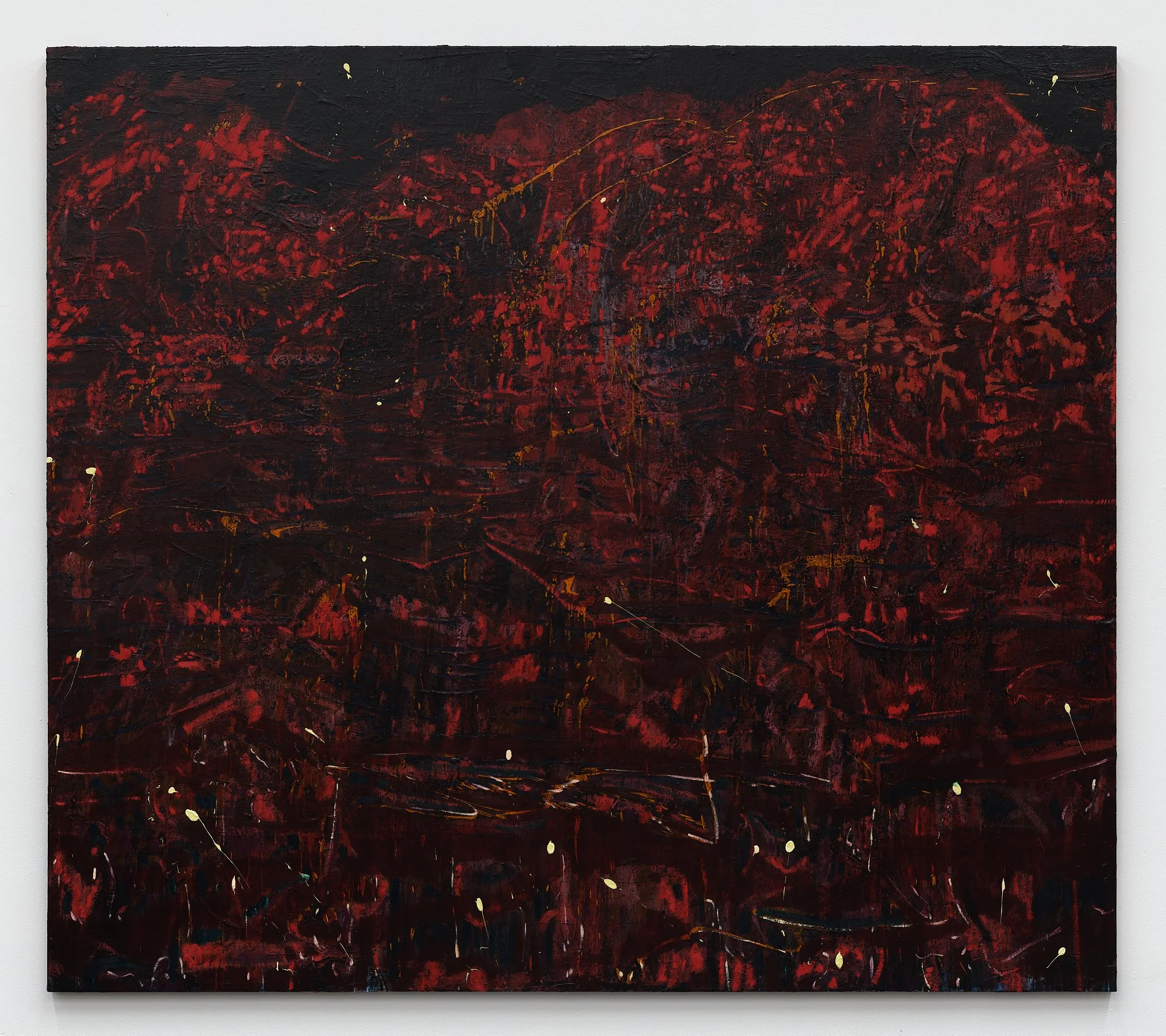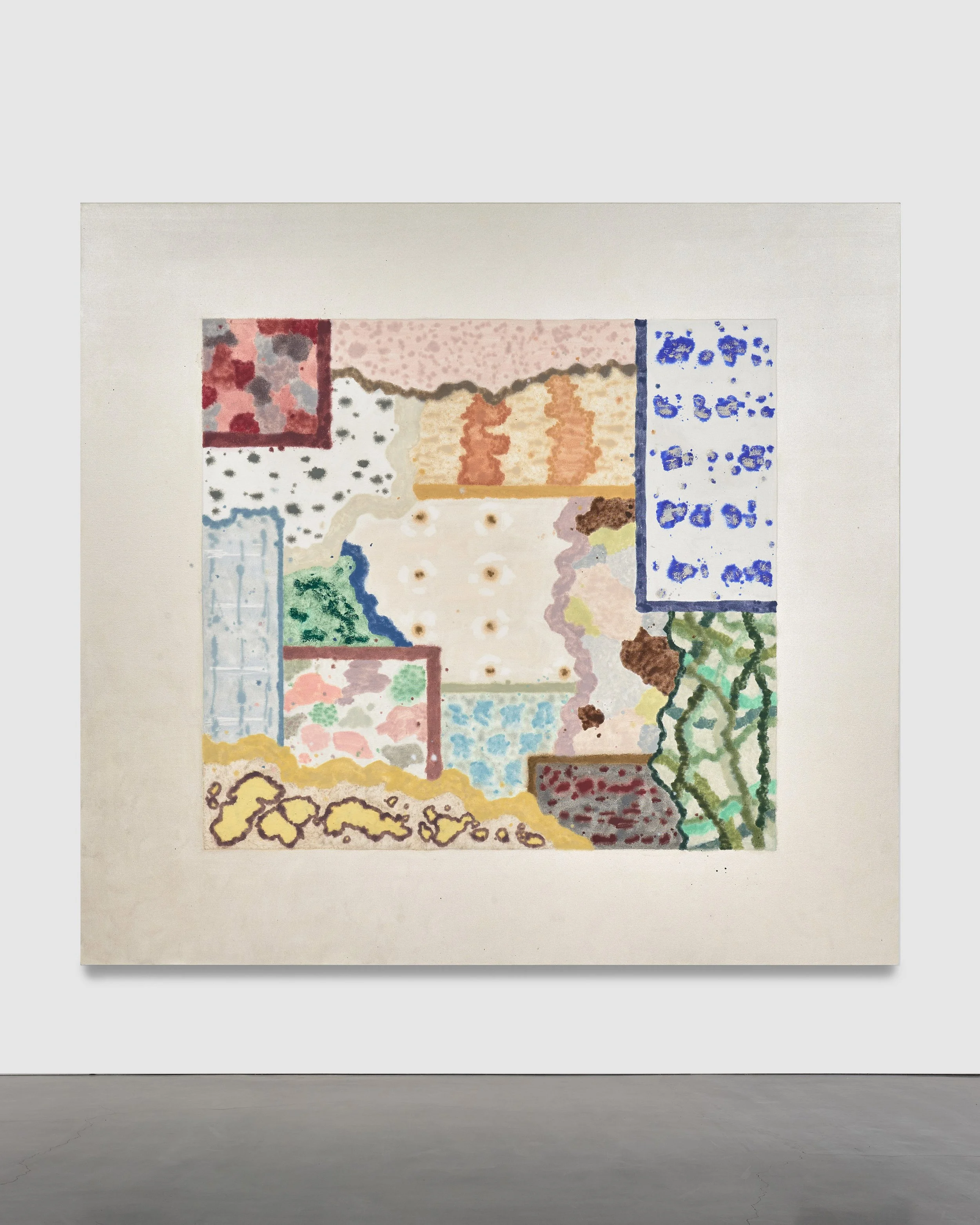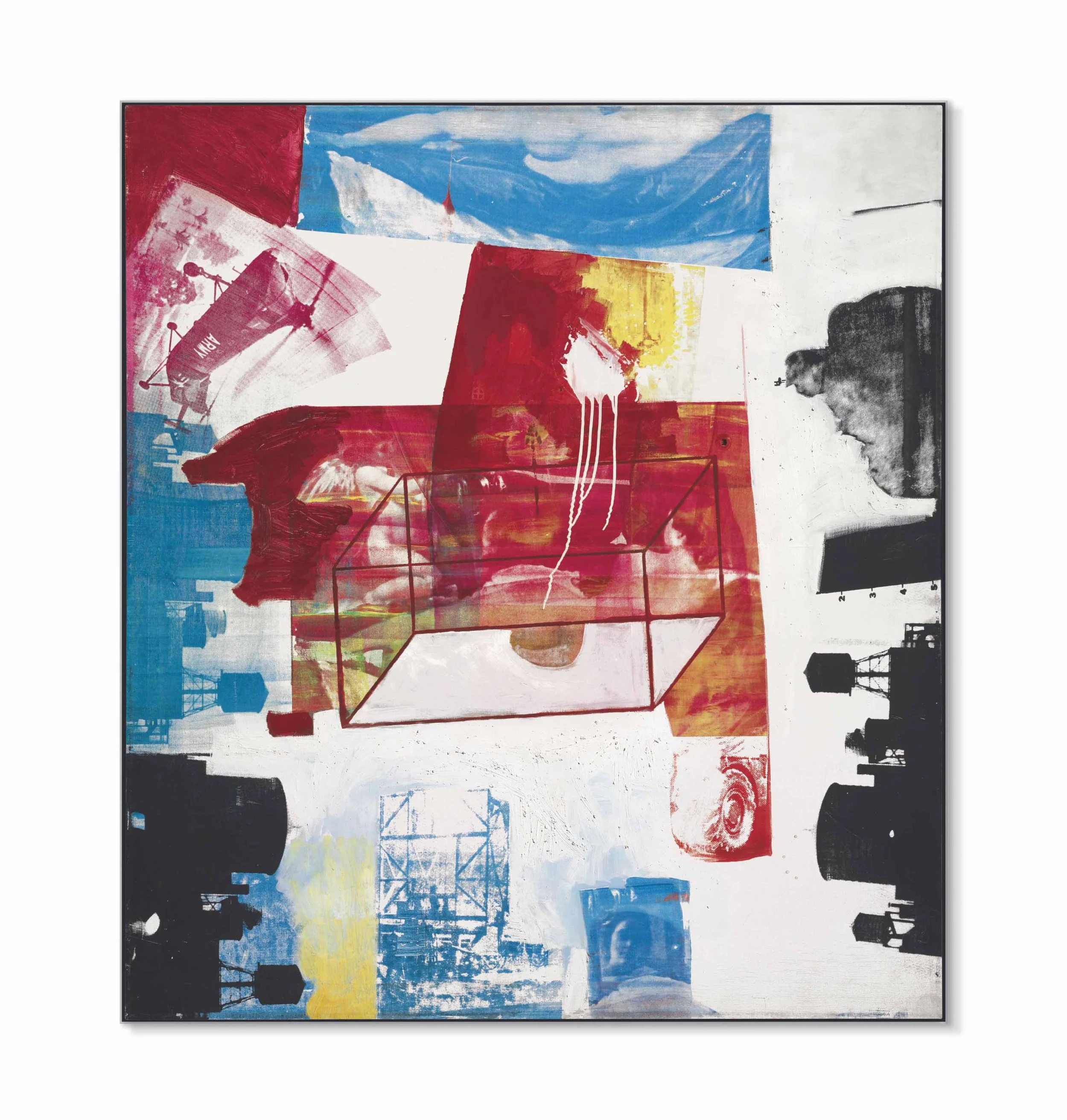Lamar Peterson’s Modernist Grimace
Most viewers, upon encountering Lamar Peterson’s work, will go no further than to subsume the paintings under the generic category of “black figuration.” This is to be expected; most people don’t care enough about art to actually look at it (whether they admit it to themselves or not).
Mirages in the Desert of Painting
In an art landscape populated by chalky paintings made by people who don't care enough about their medium to learn how to use it, crowded alongside paintings based on photos by people who think paintings are just images, it shouldn't be surprising that the gallery-going masses are titillated by a painting with a nice surface.
Rebecca Morris, “#34,” at Regen Projects
Rebecca Morris’s current show at Regen Projects, titled simply #34, after its place in the sequence of solo shows that constitutes the artist’s career evinces a painter who, having reached a certain stage of maturity, looks to take stock of the work she’s produced. How does it reflect her understanding of painting? What has held up and what is yet to convince?
Against trademark hollowness: The difference that “Theory” makes
Now seems as good as any moment, as history breaks around us, to reconsider our attachments to modernism and formalism — along with the implications of such attachments — for the purpose of developing an art criticism that aspires to be adequate to the present.
Against Art Education
Our art education does not produce artists or critics, but little art historians – worse, librarians! We are what Nietzsche described as “idlers in the garden of knowledge,” individuals with an Alexandrian relationship with art, art as an infinite archive of “works” to be perused, art as mere culture. Our spirit transforms art into artifacts.
“Et in Arcadia ego”
Art occupies a precarious position in society. The artist even more so. One the hand, art is officially sanctioned. It is generally taught, and ‘creativity’ and ‘self-expression’ are almost universally encouraged . . . But the true artist, as Octave declaims in his eulogy on the rock, knows that he “is a misfit, a stranger, a prophet none believe, and to whom none relate.”
paintings and Paintings
There are paintings, and then there are paintings — I’ll capitalize the latter. Anyone who has Seen a Painting will feel the Truth in this distinction, and anyone who has felt the dissatisfaction of merely seeing a mere painting — and who hasn’t? — will either suspect that such a distinction exists or turn away from the work in front of them in search of meaning elsewhere.
Denzil Hurley & Brian Sharp at Sebastian Gladstone
The further one surrenders to the compositional dynamics in each work, the more archetypal or elemental they seem to become. They are classically modernist in this sense, distilling form into an essential image, a snapshot of a prototypical aesthetic idea. This seems resonant with the glyph theme in their titling. Juxtapositional interventions — in this case Hurley’s sticks — resolve into a formal irreducibility.
Tradition In Sour Times
The musicians’ interpretation of the song seems to combine tradition and modernity, with the brass band itself representing tradition and the adapted song representing the modern, contemporary. However, the brass orchestras appear oddly out of time, unintentionally comical. They seem to be enacting the funeral of what they represent—the postal service as a state enterprise, tradition, and society before globalization. Yet, for centuries, the postal service symbolized progress, innovation, and renewal.
Making Mute Relations Speak
If the forced collision of dramatic characters and public situations is understood as a metaphor for art, then according to Mailand / Innenhof, art’s role seems to be that of a troublemaker. However, the “theoretical and practical creation of situations,” which echoes a situationist self-understanding, doesn’t only target scientific or political events. It also aims at the so-called cultural sector, and thus at itself.
Terre Verte
…what goes beyond the performance as surplus action becomes the real content of the film, its driving purpose. The actors don’t only play a version of themselves in Olho da Rua, they act at their acting as well and in such a way that the indications of confidence or doubt that flash across their features are never so clear. Is the feeling theirs or another’s? Is it real or feigned for the camera? Do they themselves know?
The Round Table and the German Revolution
Rosenfeld’s treatment of Freimuth’s video recording, which is both poetic and critical, follows the notion of the historical materialist as presented by Brecht’s friend Walter Benjamin in his Theses on the Philosophy of History. Film as historical research does not mean recognizing “how it actually was.”
On 80064
I do not like 80064. I do not like watching it over and over again for the purpose of this essay. It’s pornographic raw tape of the unmediated real deal. Bullying an old man is a lazy stand-in for the work of art. It would be better to live in in a world in which this video does not exist. But it does.
The Poetics of Disassembly
In Chu’s film, the dismantling becomes a metaphorical operation: it signifies a disassembly of reality into elements—akin to the montage character of film itself. But does this reveal the true reality of social labor? Hardly, because labor resists representation, both in its social function—as a source of surplus value—and in its everyday individual experience.
Introduction: Fellow Travelers — or — The Artist’s Artists
Trotsky implemented the useful metaphor that art and politics are “fellow travelers". That is, they pursue the same goal of freedom, but by different means.
Have You Ever…
That paintings are to be “looked at” seems hardly worth saying, until you go to the Museum of Modern Art and find that very few of its six-million- visitors-a-year are looking at anything, or — God forbid you should pause in front of something — you get “moved along” by the guards, who may's well be muttering “nothing to see here” while they do it, like cops at a crime scene waving gawkers on.
Rewriting Nora: Ibsen, Gender, and the Struggle for Self-Determination
“I’m not fit to be a mother. There’s something else I’d have to do first — to change myself from a doll to a real human being.” With these words, Nora Helmer (Sarah Wharton) leaves her husband Torvald (Stephen Dexter) at the end of Royston Coppeneger’s new translation of Henrik Ibsen’s A Doll House (2024).
Raoul de Keyser: The Dialectical Freedom of Painting
Often, you'll hear a painter mutter enviously while looking at a painting something along the lines of ”Damn. He just did whatever the hell he wanted.” Variations of this phrase were doubtlessly uttered many times over the last month throughout the adjoining galleries of David Zwirner’s 19th Street location, where Raoul de Keyser’s paintings hang on the walls, their apparent haphazardness inoffensively contrasting with the sky-lit gallery space.




















